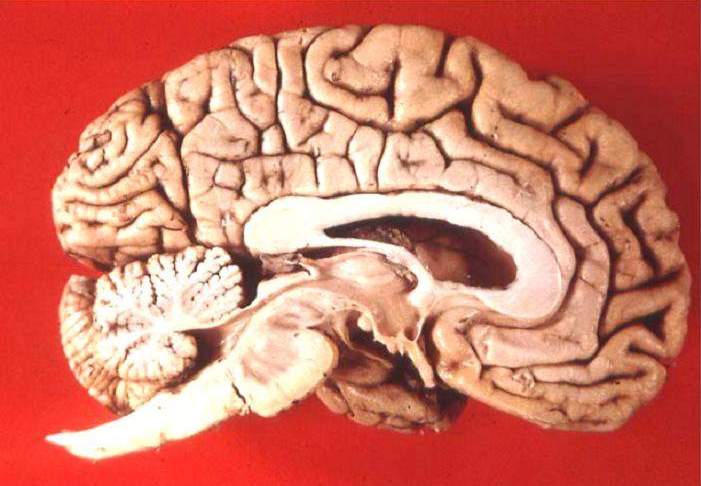Please note: Osher Rainforest will be closed for maintenance Jan. 14–16.
Science News
Our Shrinking Brains
August 1, 2011
by Anne Holden

Humans live longer than any of our close primate relatives. Mental illnesses that affect us in the later stages of life, such as Alzheimer’s disease, have also never been found in other species, including our closest relatives, the chimpanzees. Now, researchers believe they’ve found a consequence of our longer lifespans that makes our species so susceptible to this devastating disease: a shrinking brain.
As we age, our brains deteriorate. Even in the absence of disease, we are likely to face a decrease in brain activity as we get older. Recent studies involving magnetic resonance imaging (MRI) scans of ageing humans have also shown a decline in overall volume of our brain as we age. But is this shrinking unique to our species? And could it be the key to understanding the root causes of degenerative brain disease?
Chet Sherwood, an anthropologist from George Washington University, and his team answered these questions by measuring the overall brain size of humans of various ages and comparing these measurements with those of chimpanzees. They report their findings in last week’s online edition of the Proceedings of the National Academy of Sciences.
Despite the close evolutionary relationship between humans and chimpanzees, no research has ever compared the ageing brains of the two species. Sherwood and his colleagues took MRI scans of 99 chimpanzees ranging in age from 10 to 51 years, the average range of adulthood of chimps in the wild, and compared their data to MRI scans from 87 adult humans ranging in age from 22 to 88. They measured the space within the brain, including grey matter, white matter, and structures such as the frontal lobe and hippocampus. The hippocampus is linked to both short and long-term memory retention.
Their findings showed that humans showed significant reduction in brain structure volumes as they aged. But unlike humans, chimps did not - not even in the most elderly of chimpanzees.
“We were surprised that chimpanzees, who are separated from humans by only 6-8 million years of independent evolution, did not more closely resemble the human pattern of brain ageing,” explained Sherwood.
But why is this brain shrinkage unique to humans? The answer lies in the brain itself. The human brain, on average about 1450 cubic centimeters in size, is a very large and very expensive organ to maintain. As evolution led to longer lifespans in humans (traditional hunter-gatherers often live into their 80’s, while chimpanzees rarely live past 50 in the wild), it became difficult to prevent the brain from deteriorating in elderly humans.
“We suggest that the high energy cost of a large brain in humans leads to more wear and tear that cannot easily be repaired because most neurons are not renewed,” says Sherwood. “As a consequence, human brains become more vulnerable to degeneration towards the later stages of life.”
This research has implications not only for understanding the evolution of our large brains and longer lifespans over time, but in understanding mental illnesses that are a direct consequence of this evolution. Kaye Reed, a physical anthropologist from Arizona State University and National Science Foundation program officer, applauded this research. “This is an excellent example of research that has implications for societal benefits,” she stated. “The results of this research can be used as a basis to explore degenerative brain diseases, such as Alzheimer’s, in a medical context.”
Anne Holden, a docent at the California Academy of Sciences, is a PhD trained genetic anthropologist and science writer living in San Francisco.
Image: John A Beal, PhD, Louisiana State University Health Sciences Center Shreveport